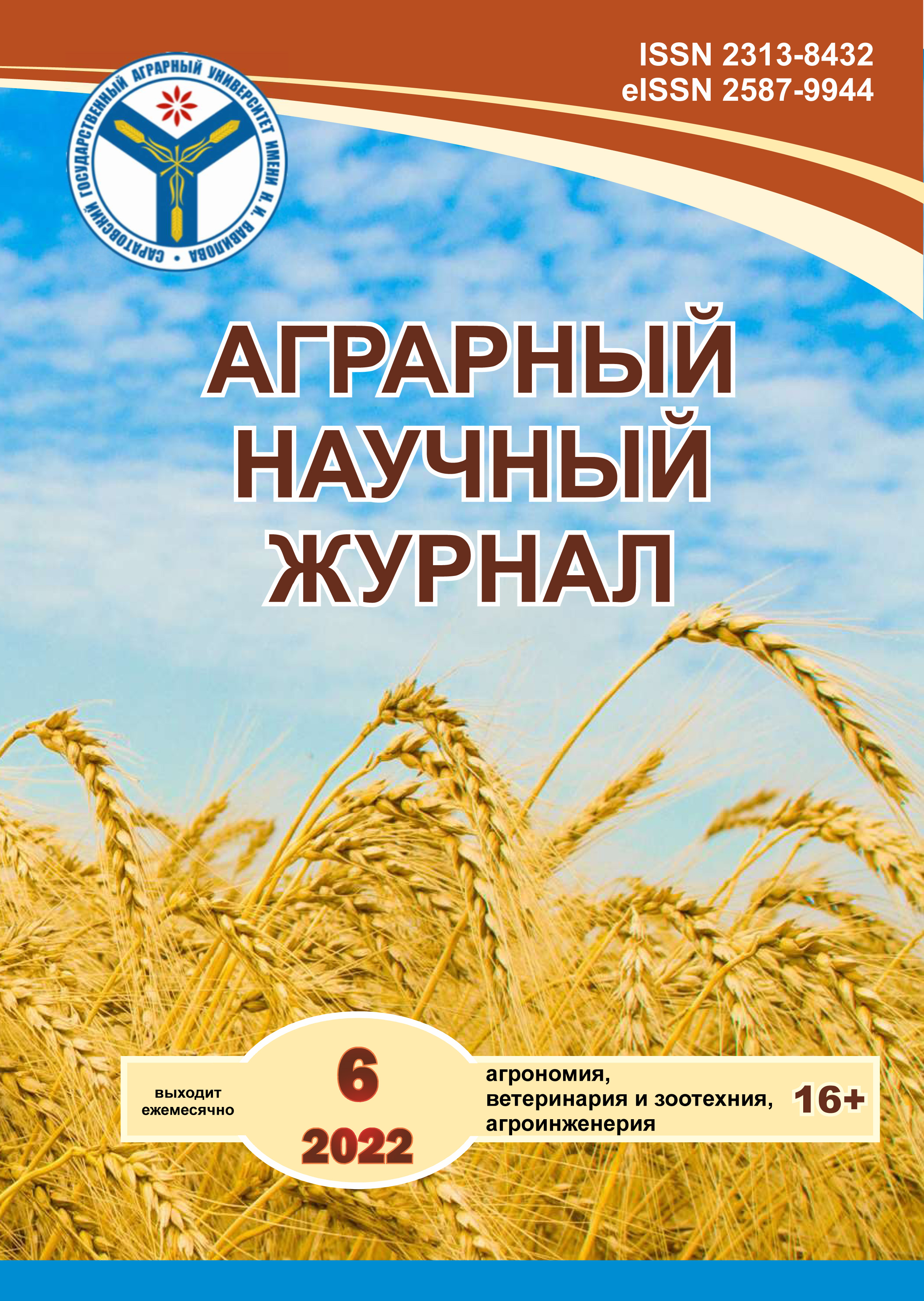Productive and production types of Sychevka breed cows
DOI:
https://doi.org/10.28983/asj.y2022i6pp69-75Keywords:
breed of Sychevka, milk productivity, coefficient of production typicity, index of production typicity, coefficient of milk production, coefficient of lactation stability, conformation type indicesAbstract
In the framework of determining the production typicity, the milk productivity of cows of the breed of Sychevka in the conditions of the Smolensk region was studied. The research according to the generally accepted methods of animal science was carried out. According to this criterion, the largest number of cows of the breed of Sychevka belongs to the high-milk type (49.4%), the smallest - to the meat type (4.7%). At the same time, there are more dairy cows than dairy and meat cows by 69.4%. The average values of the coefficient of production typicity (KPT) and the index of production typicity (IPT) are in the range of 3.69…4.51 units, that is, the studied animals may be classified as dairy. A decrease in the values of the results of typicity from first to third lactation was noted by 0.07…0.43 units (P?0.001). The conformation of cows, depending on the production type, is mainly characterized by an insignificant and unreliable difference between the values of measurements, but nevertheless it allows us to determine their compliance with the type. It should be noted that there is a significant difference in the chest circumference behind the shoulder blades for the first lactation of 7.9 cm between the high-milk and meat production types (P?0.001). The intensity of milk yield in the first and second phases of lactation, depending on the production type, increases from 1 to 3 lactation. In most cases, cows have an even lactation. In all production types, the lactation stability coefficient decreases from the first to the third lactation and amounts to 1.2…10.4%. The coefficient of milk production has a different trend: in high-milk and dairy animals, its decrease is observed by 149.1…39.0 kg, in low-milk and meat animals, an increase by 135.8-408.0 kg (P?0.001) from the first lactation to the third. The above trends should be taken into account when breeding cows of the Sychevka breed.
Downloads
References
Дунин И. М., Дунин М. И., Аджибеков В. К. Породная и генетико-селекционная база отечественного животноводства // Зоотехния. 2021. № 1. С. 2–6.
Ефимова Л. В., Ростовцева Н. М., Сурин А. Н. Экстерьерно-продуктивные особенности коров красно-пестрой породы при разных уровнях кормления // Вестник Красноярского государственного аграрного университета. 2016. № 11. С. 33–39.
Инструкция по бонитировке крупного рогатого скота молочных и молочно-мясных пород. М.: Колос, 1974. С.7.
Разведение сельскохозяйственных животных / В. Ф. Красота [и др.]. 2-е изд., перераб. и доп. М.: Колос, 1983. 413 с.
Лефлер Т. Ф. Красно-пестрая порода молочного скота и методы ее совершенствования. Красноярск, 2007. С. 31–59.
Налимова М. М. Некоторые хозяйственно-биологические и экстерьерно-конституциональные особенности первотелок красно-пестрой породы разных производственных типов // Вестник Алтайского государственного аграрного университета. 2010. № 11 (73). С. 48–51.
Ничик Б. А. Совершенствование молочного типа симментальской породы – резерв повышения удоев стад // Животноводство. 1987. № 12. С. 14–16.
Смунева В. К., Базылев М. В. Экстерьерно-конституциональные особенности коров-первотелок и их молочная продуктивность // Ученые записки УО ВГАВМ. Витебск, 2000. Т. 36. Ч.1. С. 188–189.
Продуктивное долголетие комбинированных пород крупного рогатого скота в аспекте использования современных методов селекции / О. В. Татуева [и др.]. Смоленск: Идея, 2019. 283 с.
Шевелева О. М. Производственные типы коров и их характеристика // Вестник Красноярского государственного аграрного университета. 2006. № 10. С. 185–189.
Эйснер Ф. Ф. Племенная работа с молочным скотом. М.: Агропромиздат, 1986. С. 48–51.
Downloads
Published
Issue
Section
License
Copyright (c) 2022 The Agrarian Scientific Journal

This work is licensed under a Creative Commons Attribution-NonCommercial 4.0 International License.








